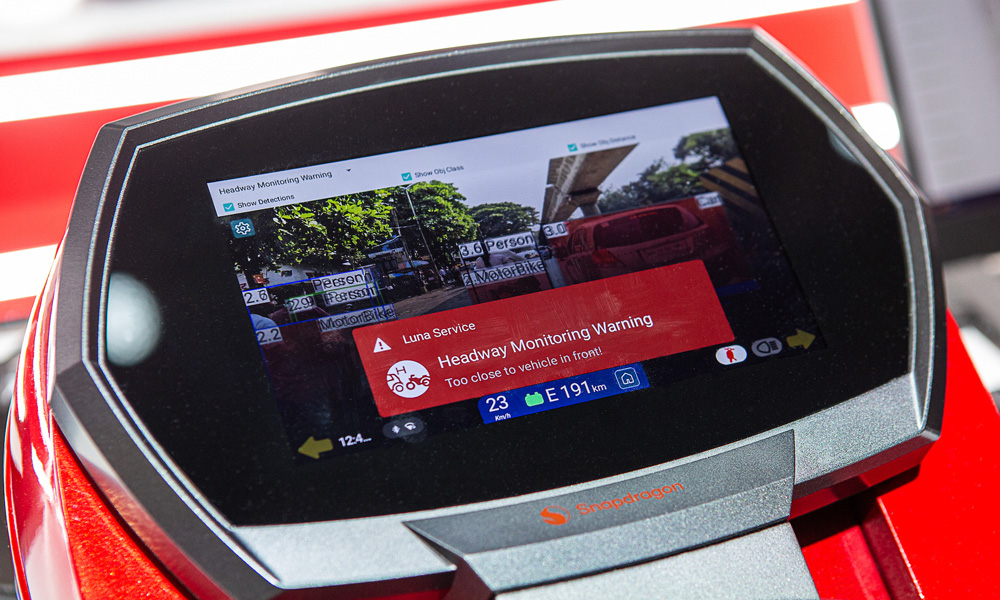
Cellular Vehicle to Everything (C-V2X) technology is poised to transform road safety and improve traffic efficiency. Vehicles equipped with C-V2X send their position, speed, and other key bits of information to nearby vehicles and serve as a powerful virtual sensor that predicts movements and potential collisions. This functionality can increase driver awareness and produce warnings that may prevent crashes as needed. Ushering in new levels of connectivity and safety, C-V2X takes vehicles a step closer to autonomy and helps drive the future of smart transportation.
The Chinese government and transportation ecosystem, including more than 100 automotive and technology companies that participated in China’s 2020 C-V2X cross-industry and large-scale pilot plugfest, are blazing a trail for C-V2X technology and paving the way for deployments worldwide. The first to have a national strategy for the Internet of Vehicles (IoV), automakers in China began mass-producing smart vehicles with this critical technology as part of the Smart Vehicles Innovation Development Strategy in February 2020. An at-scale deployment is anticipated in China by 2025, when C-V2X is targeted to be included in half of new vehicles. To demonstrate the potential benefits of connected and intelligent highways and urban roads, more than 90 cities have already partnered with local wireless network operators to deploy tens of thousands of roadside units (RSUs).
Defining a national strategy
Moving quickly on a national strategy has been instrumental for successfully deploying C-V2X in China. Shortly after 3GPP Release 14 defined LTE-V2X in 2017, China formed a committee composed of more than 20 ministries to oversee overall IoV direction, including market readiness and the development of core technical standards for the access layer, network layer, message layer, and security. The Ministry of Industry and Information Technology also issued the Administrative Regulations on the Use of 5905-5925MHz Spectrum for Direct Connected Communication on the Internet of Vehicles, to establish dedicated C-V2X spectrum with a total bandwidth of 20 MHz.
 After 11 national ministries and commissions jointly approved the smart vehicle strategy in February 2020, The Second Phase of Cooperative Intelligent Transportation System Vehicle Communication System Application Layer and Application Data Interaction Standard entered the public comment phase. Having a phased roll-out that started with equipping new vehicles with cellular technology, and then supporting short range broadcast communication between vehicles and roadside infrastructure using C-V2X in 5.9 GHz band, has supported continuous improvement to China’s C-V2X technology.
After 11 national ministries and commissions jointly approved the smart vehicle strategy in February 2020, The Second Phase of Cooperative Intelligent Transportation System Vehicle Communication System Application Layer and Application Data Interaction Standard entered the public comment phase. Having a phased roll-out that started with equipping new vehicles with cellular technology, and then supporting short range broadcast communication between vehicles and roadside infrastructure using C-V2X in 5.9 GHz band, has supported continuous improvement to China’s C-V2X technology.
C-V2X is envisioned as a sensor to inform advanced autonomous driving and intelligent transportation systems. The Ministry of Industry and Information Technology and related standards committees have already begun planning for 5G-related standards and spectrum. Current C-V2X deployments will continue to co-exist with 5G networks.
Driving ecosystem collaboration and innovation
The effort to develop intelligent and connected vehicles is an integral part of China’s strategy to transform and upgrade its automotive industry. Seeing firsthand how wireless technologies can redefine an industry, automakers and suppliers are collaborating to transform the world’s largest car market to embrace C-V2X direct communication. The transformation includes the China New Car Assessment Program (C-NCAP) that rates vehicle safety – C-V2X is intended to be part of C-NCAP by 2024.
The China Society of Automotive Engineers (C-SAE) also hosts an annual event to promote interoperability among auto OEMs, chipset vendors, module vendors, and application developers. More than 40 OEMs completed C-V2X testing at C-SAE’s four-layer IoT event in October 2020 and more than 20 are planning to participate in this year’s event, demonstrating the industry’s commitment to continuously innovating and improving the technology.
Activities at the event focused on several main objectives. The first is increasing the application of high-definition maps and high-precision positioning technologies. Large-scale functionality and performance testing using 180 on-board and roadside units is another area, along with new security certification format for trusted cross-vendor communications. The final activities are new cloud control platform and demonstrations of contextually relevant information supported by C-V2X
Qualcomm Technologies is committed to being part of the continuous development of China's auto industry through strategic collaboration, technological innovation, and a rich product portfolio. Since releasing our first C-V2X chipset in 2017, Qualcomm Technologies has completed multi-chip testing to ensure interoperability with other chipset providers and started supporting the successful commercialization of C-V2X technology in 2019.
Qualcomm Technologies is proud to be part of China’s vision for automotive safety, intelligence, and connectivity and looks forward to collaborating with the automotive ecosystem in China to drive the future of smart transportation. Future deployments around the globe can benefit from lessons learned through China’s pioneering efforts to connect vehicles and roadside infrastructure nationwide.
To learn more about, or start developing for C-V2X, visit www.qualcomm.com/products/automotive/c-v2x
ABOUT THE AUTHOR:
Jim Misener is senior director, product management, and global V2X ecosystem lead at Qualcomm Technologies
Sponsored content produced in association with Qualcomm











